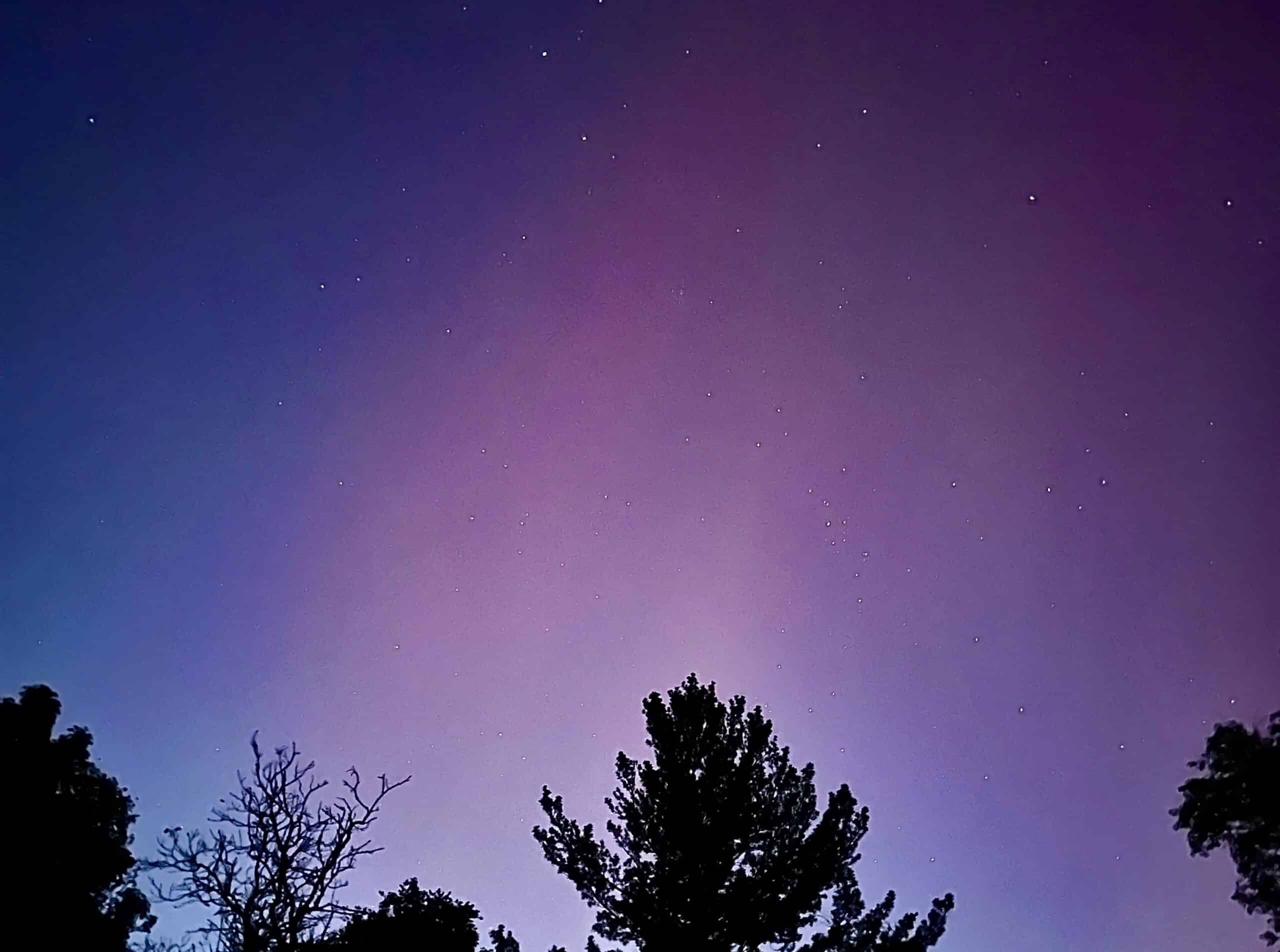Northern lights illuminate the skies of southern Ontario
Residents of southern Ontario capture photos of the northern lights in the late hours of October 10 and early hours of October 11.
On October 10 and 11, Toronto and parts of southern Ontario were treated to a colourful display of the northern lights due to a geomagnetic storm in the area.
The northern and southern lights, also known as the aurora borealis and aurora australis, respectively, are usually most visible near the poles of the northern and southern hemispheres. The lights began in the late evening hours of October 10 and spanned into the early morning hours of October 11.
“So happy I was able to see this once-in-a-lifetime view!” said Long Pham, a 27-year-old resident of Toronto who viewed this month’s light show. “It was so bright that even in downtown Toronto, despite all the light pollution, I got to experience it. The sky lit up with vibrant greens, pinks, purples, and reds, with the auroras streaking and waving across the night sky.”
Northern lights are caused by solar storms, which are also known as geomagnetic storms, according to the US National Oceanic and Atmospheric Administration’s (NOAA) Space Weather Prediction Center. Solar storms occur when the sun emits more heat and light to the Earth, sending energy and charged particles known as the solar wind. In some cases, solar wind becomes a storm where the sun’s outer atmosphere sometimes lets out huge bursts of energy called mass ejections, which produce solar storms.
While sometimes the Earth’s magnetic field shields the world from most of these storms, sometimes particles can travel down the magnetic field through the north and south poles into the world’s atmosphere. When the particles interact with gases in the Earth’s atmosphere, they produce light where green and red are from oxygen while blue and purple are from nitrogen.
This year, the northern lights travelled as far south as New Mexico, with no reports of disruptions to power and communications.
According to Shawn Dahl, a weather forecaster at the NOAA Space Weather Prediction Center, those who missed the lights can still see them. “We’re in for more of the experiences we had last night,” Dahl said to CTV News regarding this month’s northern lights.
However, it is difficult to experience the Auroras in urban areas due to light pollution. The night sky can be up to 100 times brighter than in a natural unlit location, meaning the northern lights are often hard to see due to the glow of city lights. The best way to see them is to travel outside the city where there is no light pollution to experience the lights.

